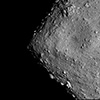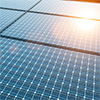Jan 20, 2023 (Nanowerk News) Physicists at the University of Bonn have experimentally proven that an important theorem of statistical physics applies to so-called "Bose-Einstein condensates." Their results now make it possible to measure certain properties of the quantum “superparticles” and deduce system characteristics that would otherwise be difficult to...
New insights into the utilization of nanotechnology-based drugs
Jan 20, 2023 (Nanowerk News) Novel drugs, such as vaccines against covid-19, among others, are based on drug transport using nanoparticles. Whether this drug transport is negatively influenced by an accumulation of blood proteins on the nanoparticle’s surface was not clarified for a long time. Scientists at the Max Planck...
Squid tissues and chemistry combine for versatile hydrogels
Jan 20, 2023 (Nanowerk News) Researchers at Hokkaido University in Japan have combined natural squid tissues with synthetic polymers to develop a strong and versatile hydrogel that mimics many of the unique properties of biological tissues. Hydrogels are polymer networks containing large quantities of water, and are being explored for...
Nanoscopic tool assesses alternative COVID-19 prevention
Jan 20, 2023 (Nanowerk News) Researchers at Kanazawa University report in Nano Letters ("Nanoscopic Assessment of Anti-SARS-CoV‑2 Spike Neutralizing Antibody Using High-Speed AFM") how high-speed atomic force microscopy can be used to assess the effectivity of spike-neutralizing antibodies for preventing COVID-19. The use of such antibodies offers a promising alternative...
Novel fluorescent compound could massively boost the efficiency of device screens
Jan 19, 2023 (Nanowerk News) Increases in the energy efficiency of organic light-emitting diodes (OLEDs) are usually incremental, but the discovery of a rule-avoiding fluorescent organic compound by RIKEN chemists promises to dramatically boost display efficiencies (Nature, "Delayed fluorescence from inverted singlet and triplet excited states"). The displays of mobile...
Approaching the terahertz regime
Jan 19, 2023 (Nanowerk News) A class of nonvolatile memory devices, called MRAM, based on quantum magnetic materials, can offer a thousandfold performance beyond current state-of-the-art memory devices. The materials known as antiferromagnets were previously demonstrated to store stable memory states, but were difficult to read from. This new study...
Sensing odor molecules on graphene surface layered with self-assembled peptides
Jan 19, 2023 (Nanowerk News) Graphene-based olfactory sensors that can detect odor molecules based on the design of peptide sequences were recently demonstrated by researchers at Tokyo Tech. The findings indicated that graphene field-effect transistors (GFETs) functionalized with designable peptides can be used to develop electronic devices that mimic olfactory...
How was the solar system formed? The Ryugu asteroid is helping us learn
Jan 19, 2023 (Nanowerk News) Mineral samples collected from the Ryugu asteroid by the Japan’s Hayabusa2 spacecraft are helping UCLA space scientists and colleagues better understand the chemical composition of our solar system as it existed in its infancy, more than 4.5 billion years ago. In research recently published in...
Improving perovskite solar cell resistance to degradation
Jan 19, 2023 (Nanowerk News) Perovskite solar cells have drawn a significant amount of research attention as a promising alternative to conventional silicon-based solar cells, due to their efficiency in converting sunlight into electricity. Perovskite solar cells are a hybrid of organic and inorganic materials and consist of a light-harvesting...
Massive fuel hungry black holes feed off intergalactic gas
Jan 19, 2023 (Nanowerk News) Research led by the University of Southampton has revealed how supermassive black holes (SMBHs) are feeding off gas clouds which reach them by travelling hundreds of thousands of light years from one galaxy to another. An international team of scientists has shown there is a...










